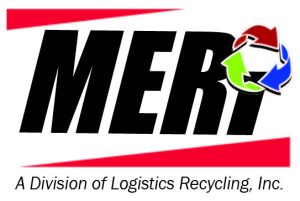
When small generators of infectious waste first hear about a medical waste mail back system, they often wonder if it’s legal. In short, yes. Here’s how this system abides by every governmental regulation to ensure you are disposing of your waste safely and compliantly.
If you have never heard of a medical mail back system, it’s a disposal method that allows small infectious waste generators to send their waste to a disposal company through the mail. Many find it much easier than having a company physically come on site to pick up and transport their waste.
That being said, we understand there’s something comforting about an in-person pickup. It affords you the opportunity to ask questions. And, it ensures you are disposing of your waste in a manner that’s compliant with governmental standards.
We want to assure you that while disposing of your waste through the mail may feel like a less involved process, it is every bit as compliant as an in-person pickup. Often, it is more affordable as well.
Medical Waste Mail Back System – Ensuring Compliant Disposal
We realize that compliance is the chief concern for infectious waste generators when considering a disposal method. Not only does noncompliance create safety hazards, it could land you a $25,000 fine. That’s per violation, per day, from the Department of Natural Resources.
In fact, it is the main reason why medical waste mail back systems take serious precautions to ensure they comply with the strict standards set by the DNR and the Department of Transportation.
While there are numerous requirements that need to be met, three especially tend to stand out. First, Proper packaging of waste. Second, proper transportation. And third, proper “cradle to grave” manifestation of waste destruction.
Here’s how medical waste mail back systems meet these criteria:
Testing
The Department of Transportation requires every infectious waste container that comes in a mail back kit undergoes a series of laboratory tests.
These tests ensure that containers won’t leak when faced with trauma, harsh weather, or any other factors that come with transportation. Tests include dropping the container from 30 to 40 feet, humidity testing and heat testing.
USPS stamp of approval
Every kit must also meet several guidelines set by the United States Postal Service. Note that USPS is the only service that will collect a mail back kit.
USPS’s requirements include stamping each box with an easily recognizable graphic to indicate it contains biohazard material. It also requires each kit to include a manifest that details the contents inside of it.
Triple-layer protection
Every mail back kit should include a triple layer of protection around the infectious waste containers. First, the container itself gets put in a spill-resistant bag. This bag is then put inside two layers of sturdy cardboard boxes. These measures assure contaminants won’t spill in the event of a transportation accident.
Tracked manifestation
Each box should include a manifest that you must sign before shipping. Additionally, a copy for you to keep. Once the disposal company receives the kit, if they have your email on file, they will send a note confirming they have it. A second one will follow when the material is officially destroyed. This lets you properly manifest the entire process.
Now that you know how a medical waste mail back system remains compliant, let’s look at what should be included in each kit.
What Each Mail Back Kit Includes
To keep the process simple, mail back kits should include everything you need to package, transport and manifest your waste. Here is what’s generally included:
- Collection container – ranging from one quart up to two gallons
- Heavy plastics
- Simple-to-follow instruction sheet
- Manifest to document proper treatment and disposal
- Prepaid return shipping label
If fear over noncompliance has ever steered you away from using a mail back system, we hope we put your worries to rest. Mail back kits are an easy – and most importantly compliant – way for small infectious waste generators to dispose of their waste.



